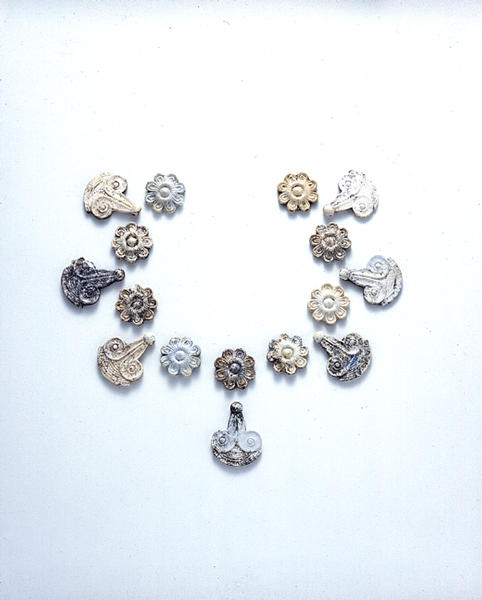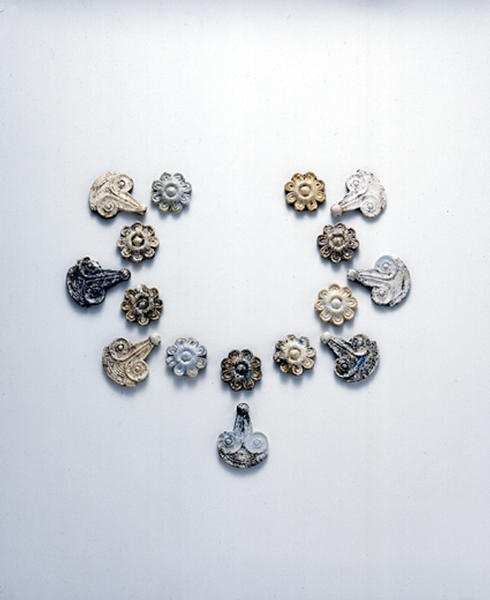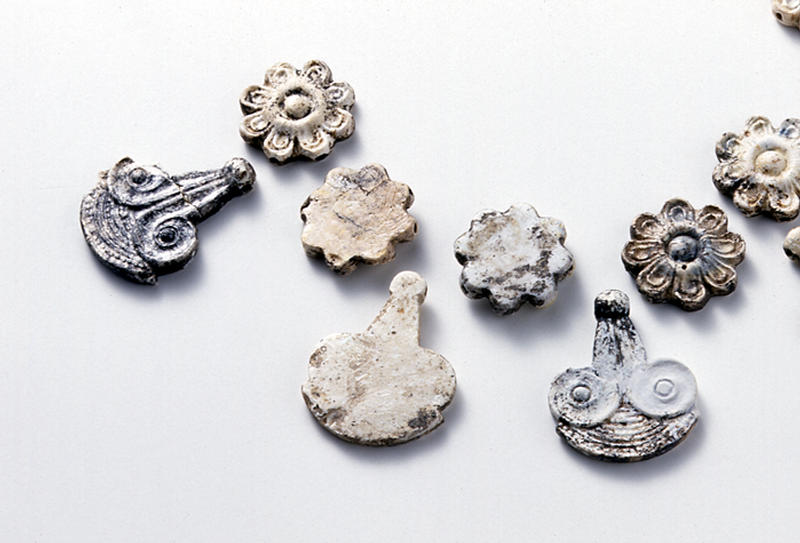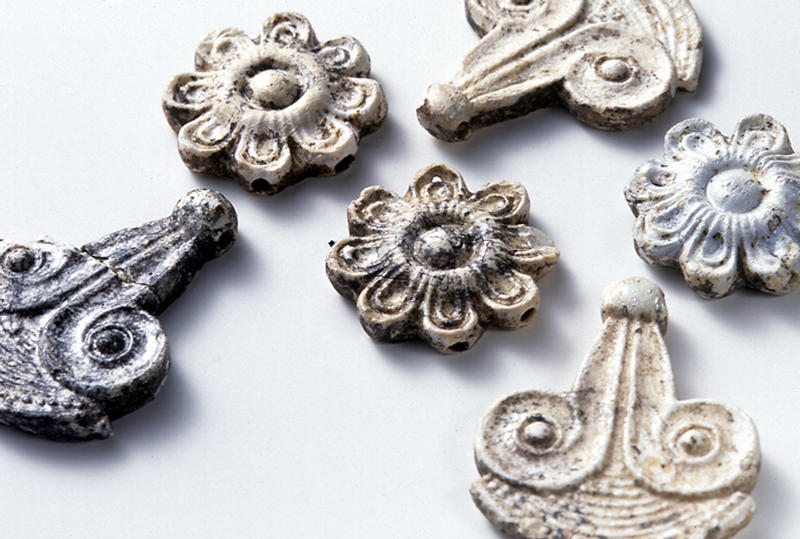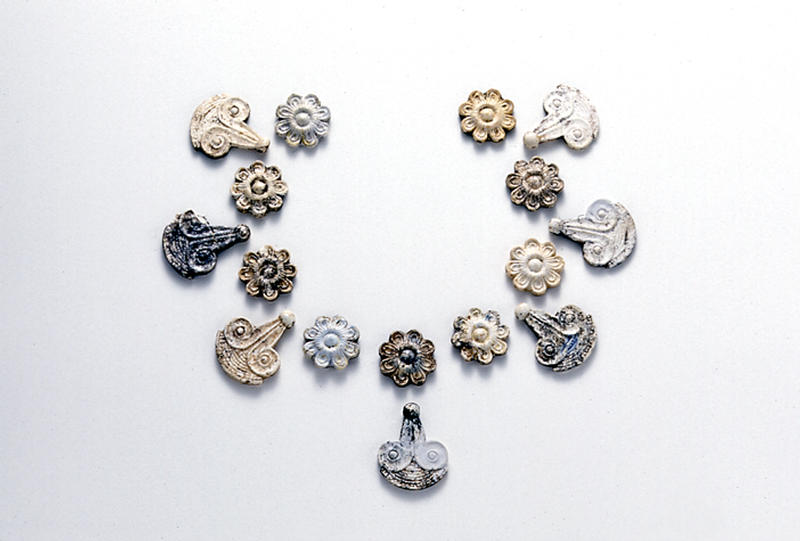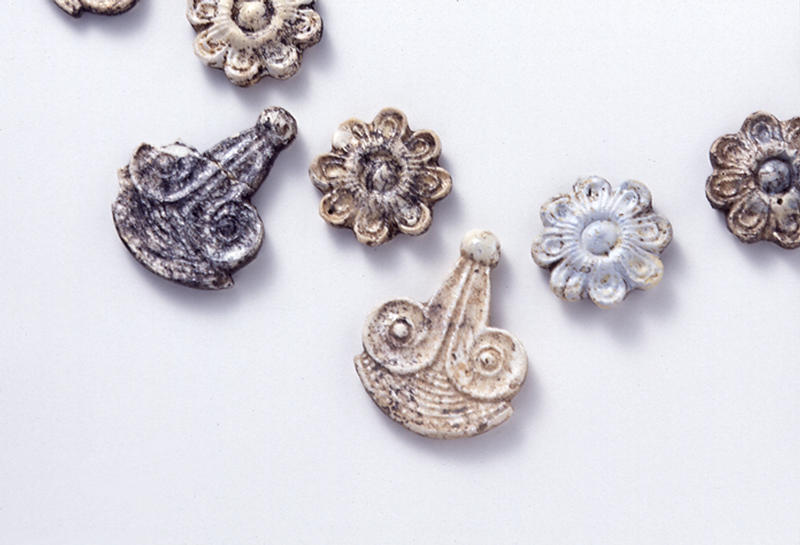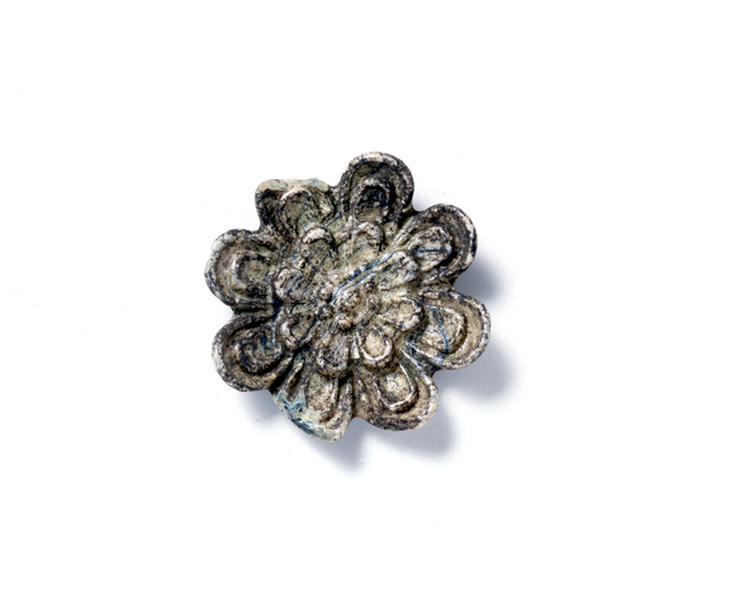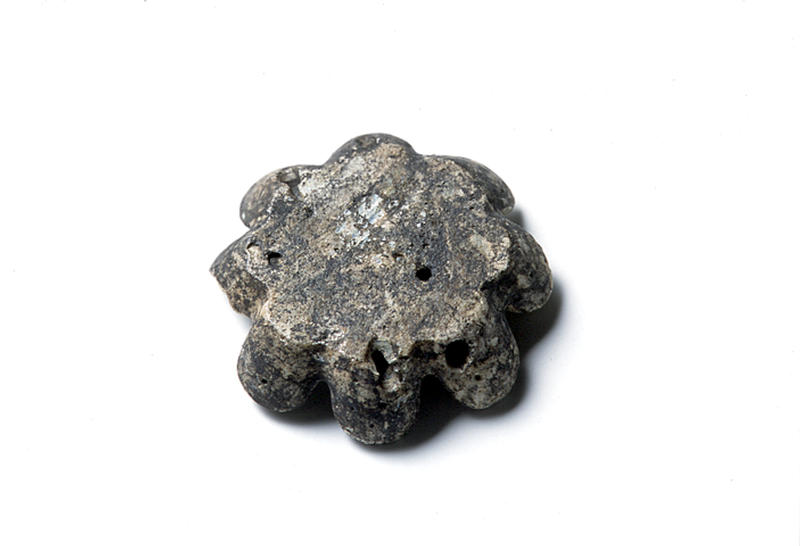Plant-shaped Pendants, Rosette Beads
- Aagean area
- 14th - 12th century B.C.
- Glass
- D-2.5 W-3.4
Catalogue Entry
a) Eight petals made up of double U-shape forms surround a raised flower center. Two parallel holes are pierced into the sides of the beads.
B) While this bead has the same 8-petal form as those at a), the petals are doubled and each flower petal has a raised tip making a more three-dimensional form. The details on this bead are more finely formed than those on a). There are two parallel holes pierced into each of the sides of the bead and it is thought to have been strung into a necklace form.
Catalogue Entry
These pendants have a papyrus flower-like motif layered on the tip of a lily flower. The details are extremely clearly cast, revealing the period's high technical levels.
Catalogue Entry(Bac#012,013,014)
12
Rosette Beads
14th‐12th century B.C.
Glass
Dia. 2.4-2.5 cm
13
Plant-shaped Pendants
14th‐12th century B.C.
Glass
Average L. 3.4 cm, average W. 2.8 cm
14
Rosette Panels
14th‐12th century B.C.
Ivory
Dia. (Large) 2.6 cm, (Small) 1.4 cm
These beads and pendants (cat. Nos. 12, 13) were cast from blue glass in an open mold. The casting process created extremely detailed 8 petal rosette designs and lily designs. There are holes on the backs which would have been used to string a thread or such, and they were probably used in groups as applique patterns on clothing or as necklaces. The surfaces of these beads have had heavy iridescence, turning them almost completely into a milky color, with only the original blue visible in small areas. These are thought to have been made in Mycenaean period Greece.
The production of glass is thought to have been brought to the Mediterranean from either Mesopotamia or Syria-Palestine, and glass first spread as an imitation of precious stones. Blue glass has been known since ancient times, and it was made to imitate the deep blue color of lapis lazuli, treasured in the ancient Orient. Lapis-lazuli comes from the area including Bactria, from northern Afghanistan, the mountains of Badakhshan and the mountains of western Pakistan. The stone was mined in these areas and carried to Mesopotamia, and particularly via Babylon to Egypt and the Mediterranean world. The trade of this period was the basic exchange of goods as tribute between kings, and this precious stone from the far northeastern edge of the ancient Orient world was extremely highly valued. It is thought that the production of these glass copies of lapis lazuli flourished during the latter half of the 2nd millennium BC, and in their writings the lapis of the day was differentiated as either "real lapis lazuli," or "lapis lazuli from the mountains," versus "lapis lazuli from the kiln." A lump of clear, dark blue glass has been excavated in Nuzi, northern Mesopotamia, and the basic glass material would have been carried from Mesopotamia and Syria-Palestine to the Mediterranean region where it would be re-melted and formed into the desired shape.
Rosette Panels
